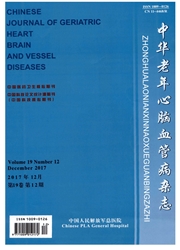

 中文摘要:
中文摘要:
背景:传统方法培养的心肌细胞活力、纯度仍不高,细胞多呈簇状生长,细胞与细胞之间的联系较少,细胞多呈单个搏动。目的:改进传统的乳鼠心肌细胞培养方法,获得纯度高、成片生长的心肌细胞。方法:运用0.1%胰蛋白酶4℃过夜消化心肌组织后加入Ⅱ型胶原酶重复消化,二次差速贴壁分离法联合化学抑制剂纯化心肌细胞。倒置相差显微镜下动态观察心肌细胞形态变化,培养48 h后用抗心肌肌钙蛋白T抗体鉴定心肌细胞纯度,连续10 d隔日记录心肌细胞的搏动频率。结果与结论:(1)心肌细胞在24 h内贴壁,72 h后成簇状分布,5-7 d细胞连接成片生长;(2)细胞存活率为96%,免疫荧光鉴定心肌细胞纯度97%以上,连续10 d内心肌细胞搏动频率差异无显著性意义(P〉0.05);(3)综上,通过这种改进的培养方式获得成片生长的心肌细胞纯度、活力更高,是一种更为有效的乳鼠心肌细胞培养方法。
 英文摘要:
英文摘要:
BACKGROUND: The cardiomyocytes obtained by traditional culture methods exhibit poor purity and viability, ceils grow in clusters, the connection between cells is less, and most of cells beat separately. OBJECTIVE: To obtain high-purity cardiomyocytes presenting with a sheet-like growth by modified culture method. METHODS: Myocardial tissues were digested using 0.1% trypsin at 4 ℃ overnight, and then digested repeatedly through the addition of type II collagenase, and finally were isolated and purified by differential adhesion method combined with chemical inhibitors. The morphology of cardiomyocytes was observed under inverted phase contrast microscope. The purity of cardiomyocytes was identified by cardic troponin T antibody after cultured for 48 hours. The beating frequency of cardiomyocytes was recorded every two days for 10 consecutive days. RESULTS AND CONCLUSION: The cardiomyocytes adhered within 24 hours of culture, distributed in clusters at 72 hours and grew in sheets at 5-7 days of culture. The survival rate of cardiomyocytes was 96% and the purity identified by immunofluorescence was over 97%. There was no significant difference in the beating frequency at different time. These results suggest that the high-purity and high-viability cardiomyocytes are obtained by the modified culture method, which is an effective method for culturing neonatal cardiomyocytes.
 同期刊论文项目
同期刊论文项目
 同项目期刊论文
同项目期刊论文
 期刊信息
期刊信息
